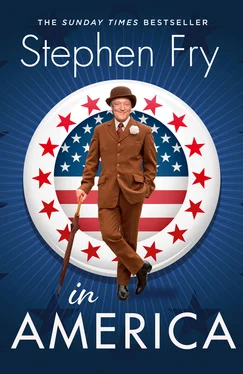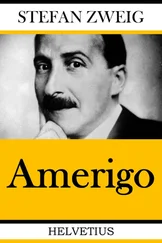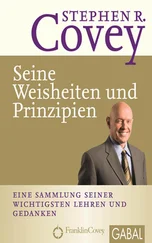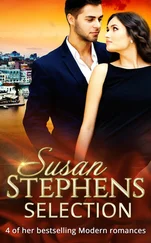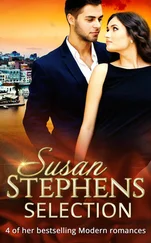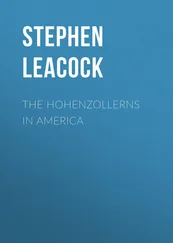A petroleum-burning ferry takes us away from Nantucket, past Hyannisport, the home to this day of the Kennedy compound: ‘Yeah, saw old Ted sailing just yesterday afternoon,’ the ferry captain tells me. ‘Gave me a wave, he did.’
I drive along the coast to Plymouth, Massachusetts where they keep a replica of the Mayflower , the ship that carried a boatload of Puritans from Plymouth, Devon to the coast of America in 1620–21. These Pilgrim Fathers have been given, almost arbitrarily one might think, the iconic status of nation-builders; it is almost as if Plymouth Rock is the very rock on which America itself was built. The turkeys those pilgrims killed for food and the sour cranberries they ate with them in their first hard winter are annually memorialised on the third Thursday of every November in the great American feasting ritual known as Thanksgiving. Those who can trace their ancestry back to the pilgrims count themselves almost a kind of aristocracy.
I enjoy a morning clambering about the boat listening to the heritage talk and watching parties of American schoolchildren having the legend of the Pilgrim Fathers reinforced in their young minds.
‘I be John Harcourt, out of Plymouth, Hampshire,’ declaims a bearded man in a leather jerkin.
‘No you baint,’ I tell him firmly. ‘You be an actor, out of New York City.’
Only I say no such thing because I am too polite. The ship is crewed by Equity members in smocks and leather caps whose idea of an English accent is to say ‘thee’, ‘thou’ and ‘my lady’ and trust to luck.
‘Do thee hail from the Old Country?’ I am asked.
‘No, no, no!’ I am once more too polite to say. ‘You mean “Dost thou” – “Do thee” makes no sense.’
The idea that the Puritans came to New England to avoid persecution is lodged firmly in the American psyche. Gore Vidal’s view that they came, ‘not to be free from persecution, but on the contrary, to be free to persecute’ while heretical to America’s vision of itself is to some extent born out in the literature of Hawthorne and the decidedly murky regimes of tyranny, bigotry and intolerance under which the citizens of the New World were forced to live in the early days. Quakers, for example, were persecuted, suppressed, tortured and discriminated against in much of New England throughout the early years of the colonies. But I suppose the tortuous alteration of real history and the elevation of the Pilgrim Fathers to heroic status was important for America, which needed to create a vision of itself consonant with its lofty aims. I dare say Robin Hood was a greedy cut-throat and Boadicea a cruel tyrant – all nations twist history and cleanse their heroes in order to express an ideal to live up to.
Nowhere in America is the religious intolerance and fanaticism of the early colonies more apparent, or more weirdly celebrated, than in the small town of Salem, MA.
Halloween is the first of America’s great winter festivals of celebration and commerce, followed by Thanksgiving and completed by Christmas (or the Holidays, as they are usually called, in deference to non-Christians) and New Year. Children across America go trick-or-treating dressed up as ghosts, monsters, gore-spattered zombies or, somewhat inexplicably, superheroes. For weeks before the actual day houses and gardens (‘yards’) are decorated with scarecrows, gravestones, pumpkins and autumn fruits creating a weirdly pagan mélange of Wicker Man Celtic, Transylvanian Gothic and Parish Harvest Festival.
In the late seventeenth century an attack of mass hysteria in Salem, Massachusetts resulted in a series of witch trials, judicial torture and hangings. Arthur Miller’s play The Crucible famously used the episode as a metaphor for the Communist ‘witch-hunts’ of his own time. The shameful, primitive and disgusting events of the 1690s have receded into jokey folk lore and Salem now embraces its position as the Halloween and Olde Puritan capital of America, abounding with Publick Houses and Crafte Shoppes. Indeed there are now real witches in Salem, witches who are Out and Proud.
‘Can you feel the positive energy here?’
‘Er, well, since you mention it, not really …’
I meet High Priestess Laurie Cabot in her occult shop ‘The Cat, The Crow and The Crown’, the first of its kind, she claims, anywhere in the world. She and her co-religionists have fought long and hard for ‘the Craft’ to be treated as any other faith under the constitution. Laurie is the ‘Official Witch of Massachusetts’, a title granted by Governor Dukakis in the seventies. She is not to know that I am entirely allergic to anyone using the word ‘energy’ in a nonsensical, New Age way. A hundred years ago it would have been ‘vibrations’. I am determined not to be surly and unhelpful, however, so I plough on.
‘Big day for you, today, Laurie. Halloween.’
‘Today is not Halloween,’ she says, putting me right, ‘it is the ancient Celtic festival of Samhain. The Christians took it over, along with so much else.’ There is no black cat perched on her shoulder, but there might as well be. ‘The Christians went from persecuting us to scorning us for what they call superstition.’
I murmur sympathy, which is genuine. To me, all religions are equally nonsensical and the idea that Christians, with their particular invisible friends, virgin births, immaculate conceptions and bread turning into flesh, could have the cheek to mock people like Laurie for being ‘superstitious’ is appalling humbug.
Laurie invites me to a great Samhain meeting (I forbear from using the word ‘coven’ for I have an inkling it might offend); it is to be held not naked and out of doors, leaping through flames and around pentacles, but in the ballroom of The Hawthorne Hotel. No black candles, no reciting of the Lord’s Prayer backwards. This is not Hammer House of Horror but a kind of syncretic New Age mixture of Druidism, Celtic folklore and much vague talk about ‘energies’.
The meeting itself is a very charming party in which the Cabot-style witches who have come from all over the world to be here dress up, dance (to seventies and eighties pop mostly) and then come forward for a ‘circle’ in which a sword is waved, incantations are made and ‘energies’ invoked. It is all over very quickly and then Laurie and I get on with the business of judging the best costume of the evening.
Meanwhile outside, the entire town of Salem has turned into a huge horror and gore theme park. The smell of donuts and burgers, the sound of rock music, the sight of murder, mayhem and death. By twelve o’clock it’s all over and everyone is in bed. It seems to me that there is more true Gothic horror in a digestive biscuit, but never mind. Tomorrow I shall be immersed in the comforting sophisticated grandeur of the state capital.
I spend a morning in the city of Boston, ‘Cradle of the Revolution’, filming around the docks where the Boston Tea Party took place and searching (in vain) for Paul Revere’s house. Revere was the patriot and hero whose midnight ride from Boston to Lexington shouting ‘The British are coming!’ is still celebrated in legend and song. The apparent address of his house defeats the taxi’s satellite navigation system and after driving around Boston’s Chinatown asking puzzled citizens for ‘the Revere House’ I find myself in desperate need of a cup of tea.
It so happens that I have heard of a place across the water in Harvard Yard where, almost uniquely in America, a proper cup of tea can be had. If you can pronounce ‘Harvard Yard’ the way the locals do, you can speak Bostonian. It’s more than I can manage – I contrive always to sound Australian when I try. The ‘a’s are almost as short as in ‘cat’, even though they are followed by ‘r’s. Impossible.
Читать дальше
